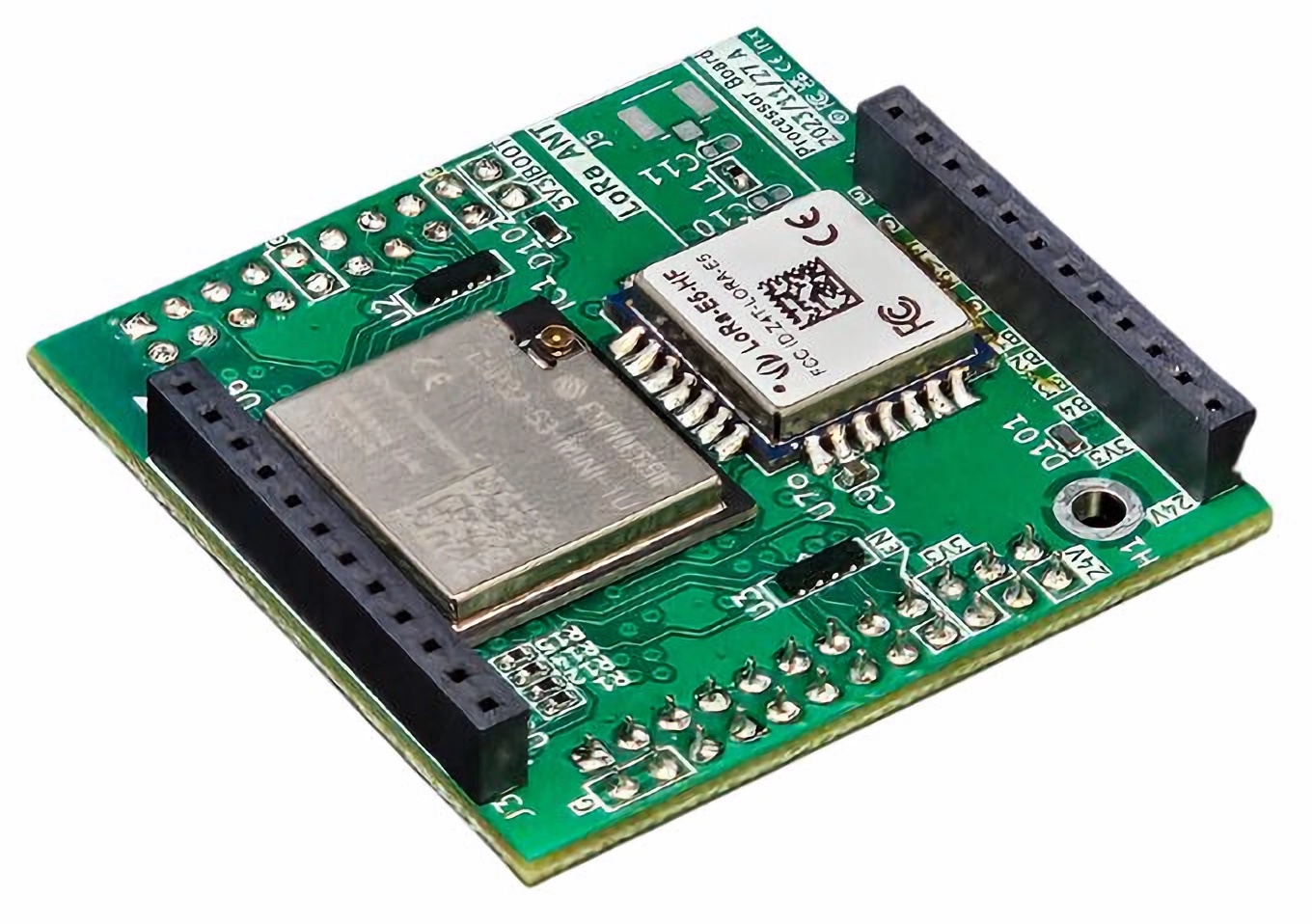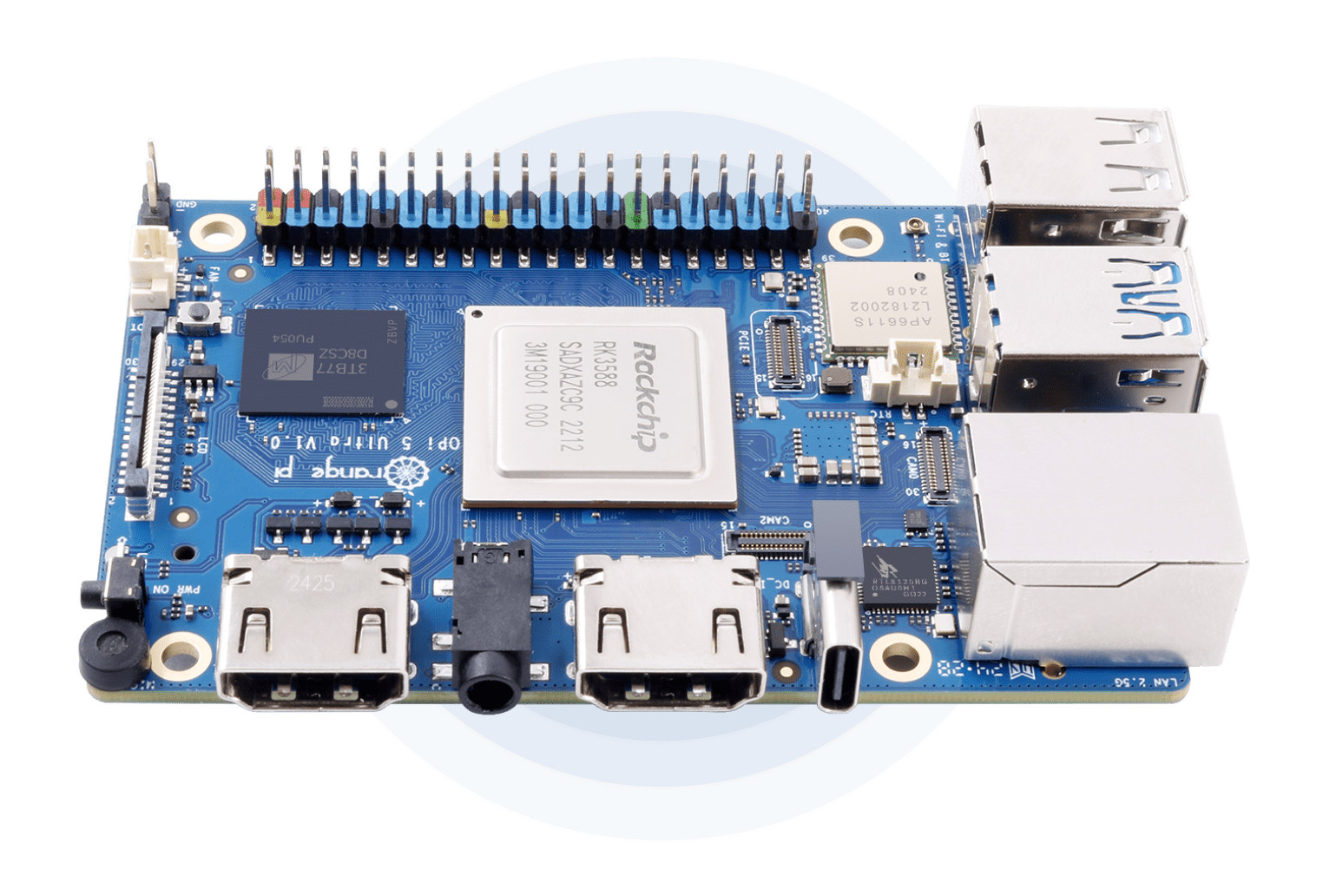Sipeed has recently released the MaixCAM-Pro AI camera devkit built around the SOPHGO SG2002 RISC-V (and Arm, and 8051) SoC which also features a 1 TOPS NPU for AI tasks. The module includes a 2.4-inch color touchscreen and supports up to a 5MP camera module. Other features include WiFi 6, BLE 5.4, optional Ethernet, built-in audio capabilities, a PMOD interface, GPIOs, and more. Additionally, it features an IMU, RTC chip, and AXP2101 power management for enhanced performance. The module is designed for AI vision, IoT, multimedia, and real-time processing applications. Just a few months back, Sipeed introduced the MaixCAM AI camera devkit, which is also built around the SOPHGO SG2002 RISC-V SoC. The new module improves on the MaixCAM with a redesigned PCB, upgraded casing, and various new features including a 2.4-inch IPS touchscreen (640×480), a 1W speaker, expanded IO interfaces, a power button, and an illumination LED. It also […]
LoRaWAN no code ESP32-S3 development platform offers Arduino MKR, MikroBus, FeatherWing, and Grove expansion (Crowdfunding)
Sheffield-based IoT company, inx-systems has developed a programmable LoRaWAN IoT module and a development breakout board that integrates with Arduino MKR, Adafruit FeatherWing, Grove, and mikroBUS shields. The module is powered by an ESP32-S3 microcontroller which comes preloaded with inx’s no-code LoRaWAN software development platform, Lucid. The WAN-4-ALL module has built-in Wi-Fi, Bluetooth, and LoRaWAN connectivity via the ESP32-S3 microcontroller and Seeed Studio Wio-E5 module. This makes the module suitable for short-range, medium-range, and long-range IoT applications such as remote monitoring, home automation, industrial control, and smart agriculture. We have covered other LoRaWAN development platforms such as SB Component’s RAKWireless-based products, Particle’s multi-radio devices, and the UnPhone. The WAN-4-ALL module differentiates itself with the preloaded no-code LoRaWAN development environment and multiple connectivity options. WAN-4-ALL module specifications: SoC – Espressif Systems ESP32-S3 dual-core microcontroller @ 240MHz with Wi-Fi 4, Bluetooth LE 5 LoRaWAN Module – Seeed Studio Wio-E5 Module based on […]
VOIPAC iMX93 industrial development kit targets AI, HMI, and Edge Computing applications
VOIPAC Technologies has recently launched its iMX93 Industrial Development Kit (iMX93 module and iMX development baseboard) which comes in Max, Pro, Basic, and Lite configurations. The system-on-module (SoM) is built around the NXP i.MX93 SoC with dual-core Arm Cortex-A55 application processor running at up to 1.7GHz, a Cortex-M33 co-processor running at up to 250MHz, and an Arm Ethos-U65 microNPU with up to 0.5 TOPS of AI performance. Other features include DDR4 memory, eMMC Flash, and industrial-grade 100-pin shielded connectors for signal integrity and thermal performance. Additionally, the devkit also exposes CAN, PWM, ADC, etc.. signals and supports WiFi 6, Bluetooth 5.3, and dual GbE. These features make the VOIPAC iMX93 industrial development kit suitable for applications including AI, machine learning, human-machine interface (HMI) solutions, and more. iMX93 Industrial Development Kit specifications: System-on-Module (four options) iMX93 Industrial Module Max SoC – NXP i.MX 93 dual-core @ 1.7 GHz with real-time Cortex-M33 co-processor NPU […]
u-blox MAYA-W4 tri-radio IoT module features NXP IW610 chipset with Wi-Fi 6, Bluetooth 5.4, and 802.15.4 radios
Last year, we covered the u-blox MAYA-W3 module, which was based on the Infineon AIROC CYW5551x chipset and utilized separate chipsets for 2.4 GHz, 5 GHz, and 6 GHz frequencies. Now, u-blox has introduced the MAYA-W4 series, a host-based Wi-Fi 6, Bluetooth 5.4, and 802.15.4 module built on the NXP IW610 chipset. Designed for industrial and commercial applications such as building automation, energy management, smart homes, and healthcare, the MAYA-W4 series supports SISO Wi-Fi 6 with a 20 MHz channel width, ensuring reliable performance in dense network environments. These modules can function as access points, stations, P2P devices, or in mixed modes. The MAYA-W4 modules are compatible with the Matter protocol over Thread and Wi-Fi, facilitating seamless integration across ecosystems. With a compact size of 10.4 x 14.3 mm, these modules rank among the smallest Wi-Fi 6 SMD modules and are available with integrated antennas or U.FL connectors. Rigorous testing […]
Renesas RZ/T2H Cortex-A55/R52 industrial MPU and Dev Board support EtherCAT, PROFINET, and TSN
Renesas RZ/T2H industrial MPU is the most powerful member of its RZ/T2 series of real-time microprocessors. The MPU features four Arm Cortex-A55 CPUs for application tasks and two Cortex-R52 CPUs for real-time control. It supports 9-axis motor control with 3-phase PWM timers, delta-sigma interfaces, and encoder interfaces. It also supports Industrial Ethernet protocols like EtherCAT, PROFINET, and TSN. These features make it ideal for industrial applications such as industrial robots, PLCs, motion controllers, and CNC machines. Renesas launched the RZ/T2L single-core Arm Cortex-R52 MPU just last year, and before that, in 2022, they launched the RZ/T2M dual Arm Cortex-R52 MPU. The RZ/T2L was just a cost-down version of RZ/T2M with an EtherCAT controller, compared to those old controllers the latest RZ/T2H supports 9-axis motor control and compatibility with various industrial Ethernet protocols. Renesas RZ/T2H specifications: CPU 4x Arm Cortex-A55 (64-bit) clocked at up to 1.2GHz with 32KB L1 I/D cache, 1MB L3 cache 2x […]
Orange Pi 5 Ultra SBC offers HDMI 2.1 output and HDMI 2.0 input
The Orange Pi 5 Ultra is a Rockchip RK3588 SBC that’s slightly larger than a business card and visually identical to the Orange Pi 5 Max introduced last August, but replacing one of the two HDMI 2.1 video outputs on the latter with an HDMI 2.0 input port. The new single board computer is still offered with up to 16GB LPDDR5, an eMMC flash module connector or soldered-on eMMC flash, an M.2 socket for an NVMe SSD, 2.5GbE and WiFi 6E networking, and four USB 3.0/2.0 ports. Orange Pi 5 Ultra specifications: SoC – Rockchip RK3588 CPU – Octa-core processor with 4x Cortex-A76 cores @ up to 2.4 GHz, 4x Cortex-A55 cores @ up to 1.8 GHz Arm Mali-G610 MP4 GPU with support for OpenGL ES1.1/2.0/3.2, OpenCL 2.2, and Vulkan 1.2 6 TOPS AI accelerator with support for INT4/INT8/INT16/FP16 mixed operation VPU – 8Kp60 H.265/VP9/AVS2 10-bit decoder, 8Kp30 H.264 decoder, […]
STMicro NUCLEO-WL33CC1 and NUCLEO-WL33CC2 boards features STM32WL33 Cortex-M0+ Sub-GHz wireless MCU
STMicro unveiled the STM32WL3 sub-GHz wireless MCU family last year and has now announced the general availability of the STM32WL33 Arm Cortex-M0+ microcontroller, along with two development boards namely the NUCLEO-WL33CC1 and NUCLEO-WL33CC2 for battery-powered smart meters and smart building and industrial monitoring solutions using wireless M-Bus, Sigfox, WiSun, LoWPAN or Mioty LPWAN protocols among others. The NUCLEO-WL33CC1 and NUCLEO-WL33CC2 development boards look the same, but the former supports 826-958 MHz high-band frequencies, while the latter handles 413-479 MHz low-band frequencies. STMicro NUCLEO-WL33CC1/2 specifications: SoC – STMicro STM32WL33CCV6 MCU Core – Arm Cortex-M0+ up to 64 MHz Memory – 32KB SRAM with full retention Storage 256KB flash 1 KB OTP flash (user data) Sub-GHz Wireless 413-479 MHz or 826-958 MHz frequency bands with OOK, ASK, 2(G)FSK, 4(G)FSK, D‑BPSK, and DSSS modulations Compatible with proprietary and standardized wireless protocols such as WM-Bus, Sigfox, Mioty, KNX-RF, and IEEE 802.15.4g Low-power autonomous wake-up […]
Waveshare launches three RP2350 USB-C development boards with castellated design, battery support, built-in Ethernet port
Waveshare has announced four new USB-C and USB-A development boards based on the Raspberry Pi RP2350 MCU: the Waveshare RP2350-Plus dev board, the Waveshare RP2350-Zero Mini dev board, the Waveshare RP2350-ETH Mini dev board, and the Waveshare RP2350-GEEK USB dev board. The RP2350-Plus is a low-cost, high-performance Pico-like development board with the RP2350 MCU, various I/O, battery support, USB Type-C, and compatibility with Raspberry Pi Pico modules. The RP2350-Zero Mini is another compact dev board with castellated pins, 29 GPIOs, USB Type-C, PIO, and versatile peripheral support, ideal for IoT, robotics, and embedded systems. The RP2350-ETH Mini dev board has Ethernet support and various GPIO functionalities, making it ideal for IoT development. Like any other RP2350 board, the Waveshare RP2350 boards support C/C++ and MicroPython SDKs with drag-and-drop firmware flashing via USB mass storage. Waveshare RP2350-Plus development board The Waveshare RP2350-Plus is a low-cost development board that comes in a […]










